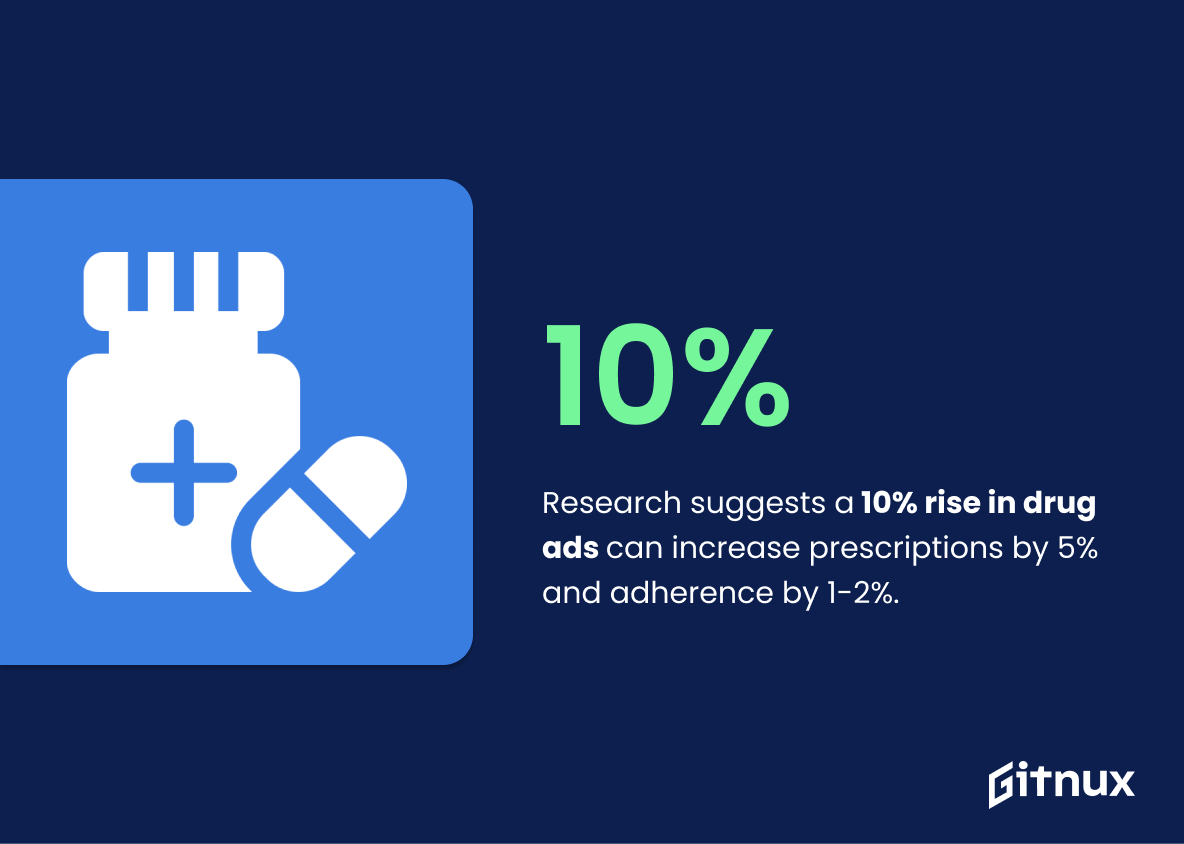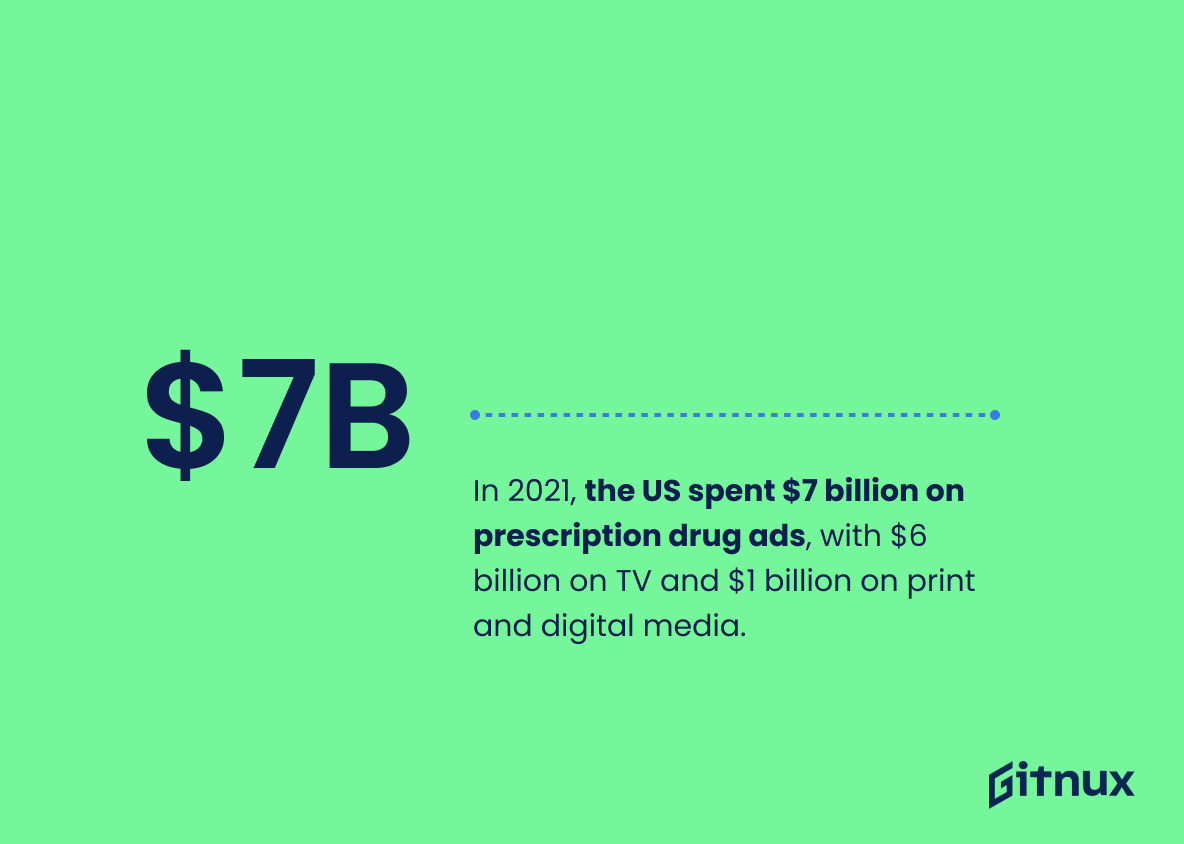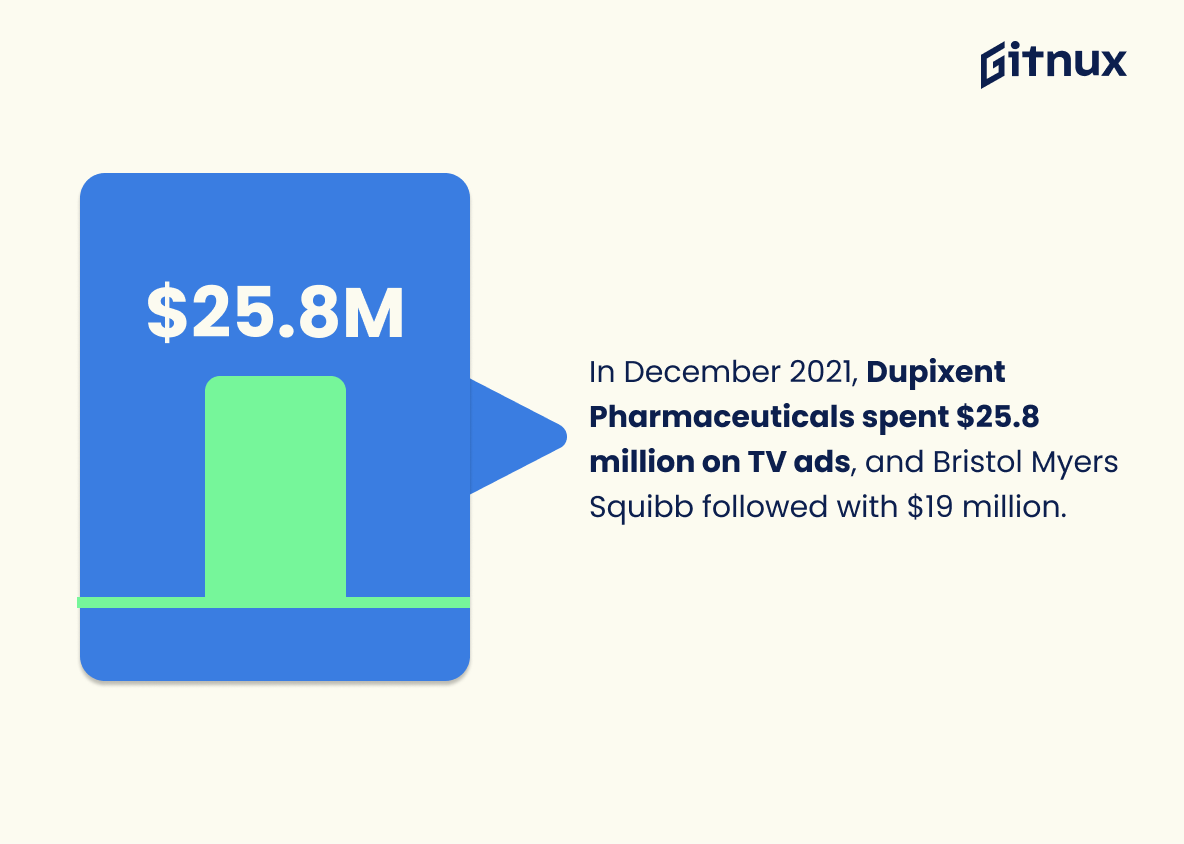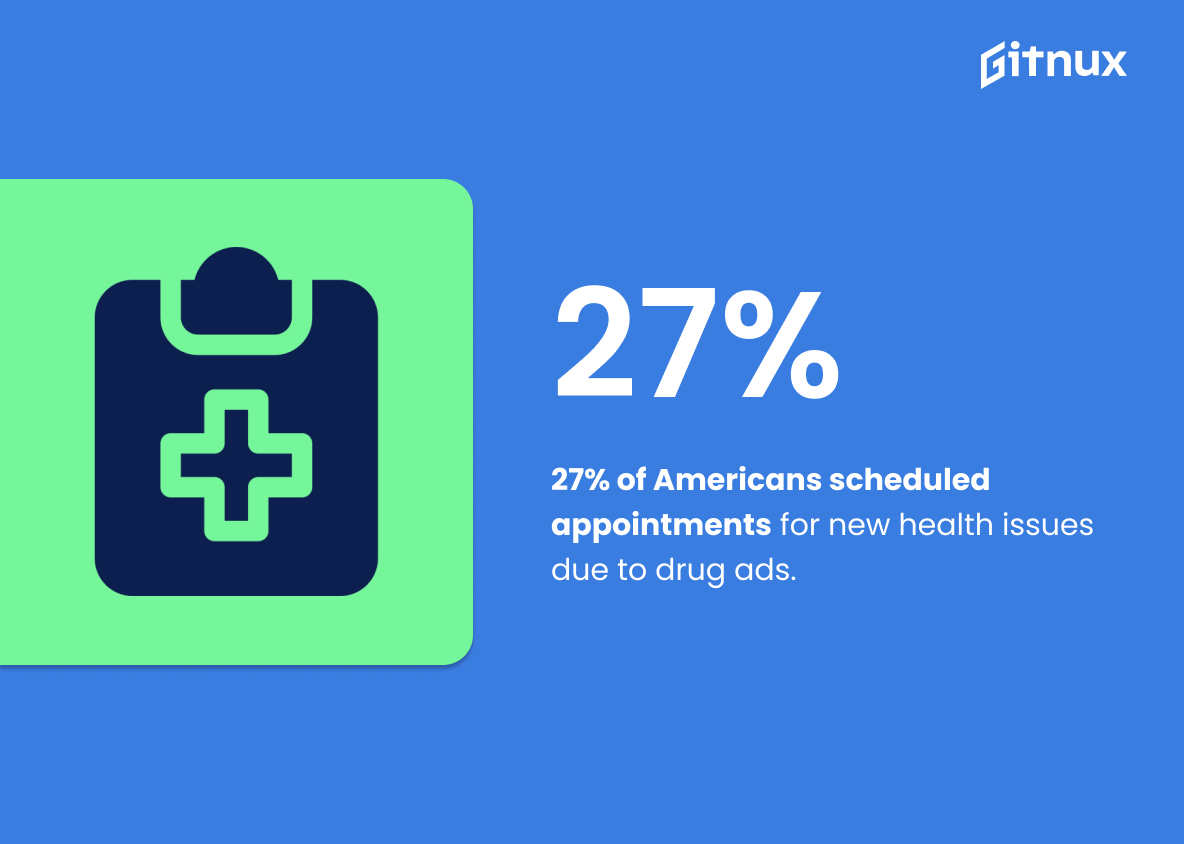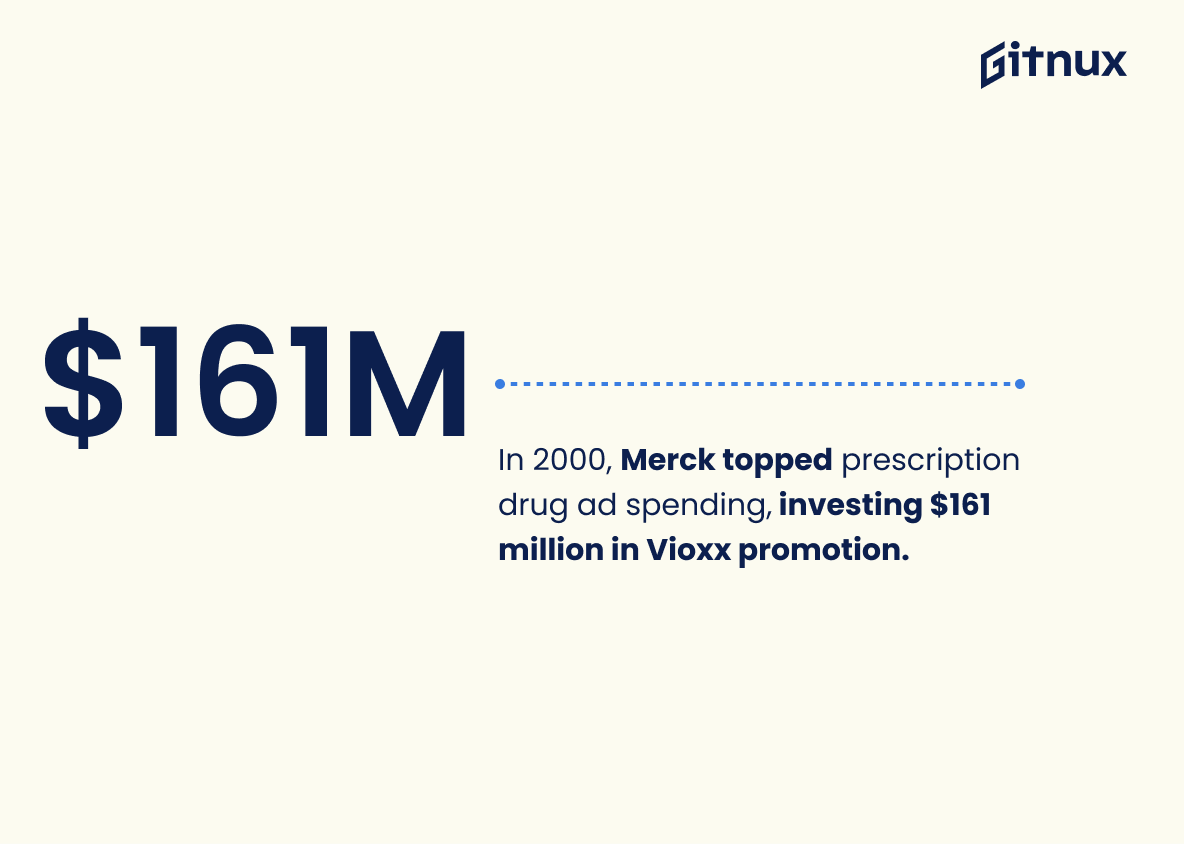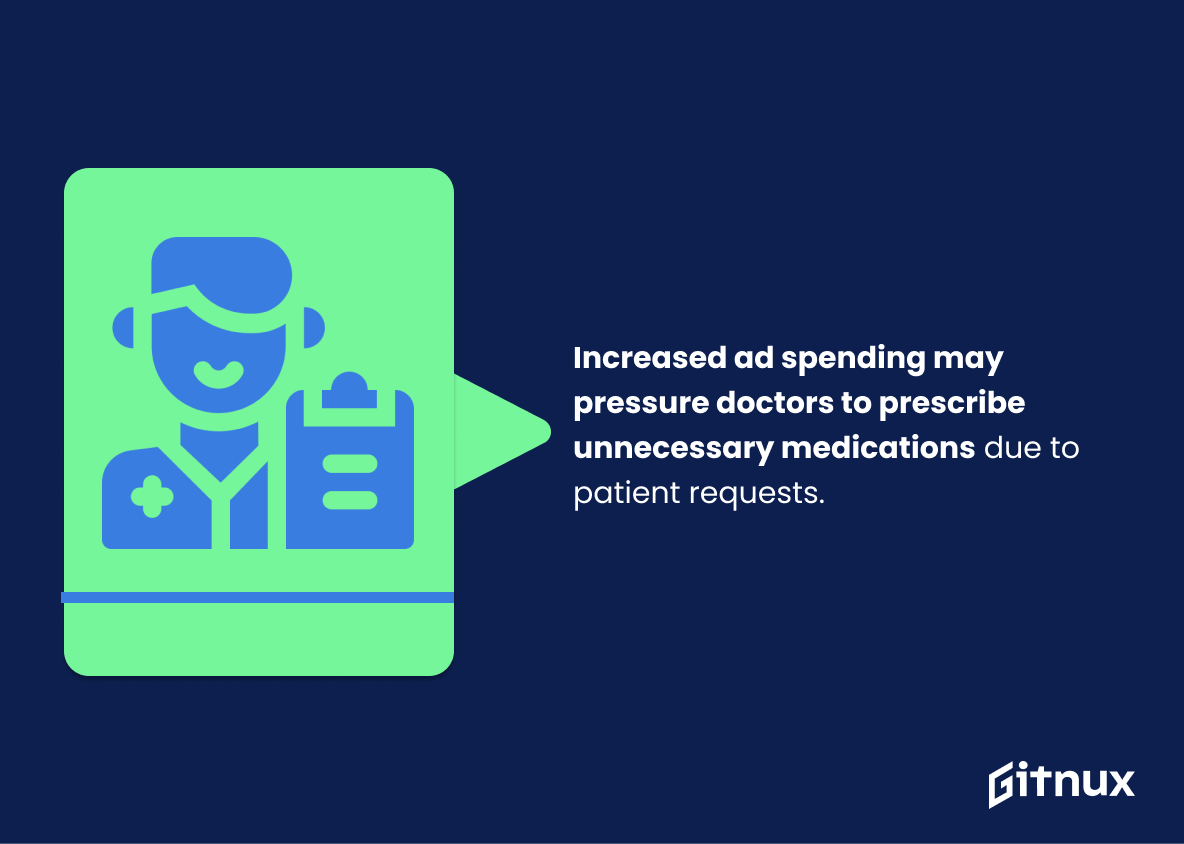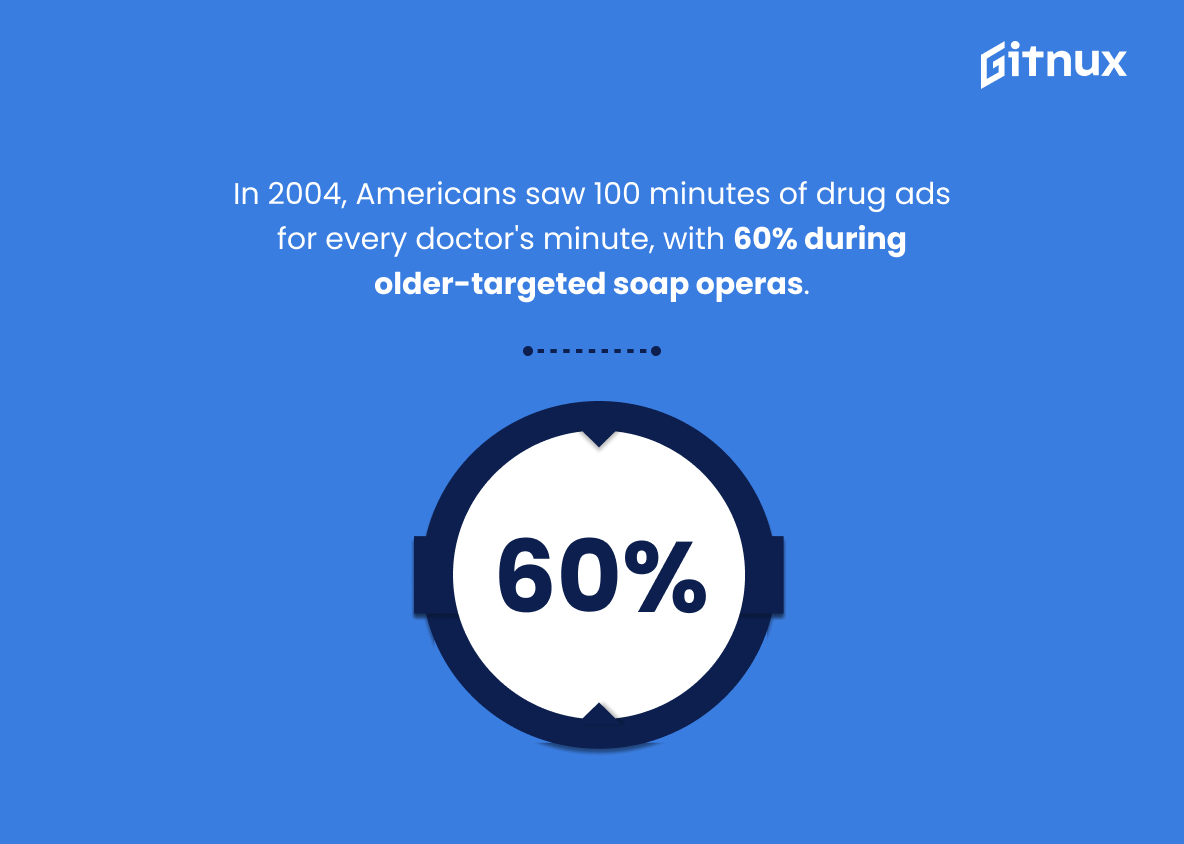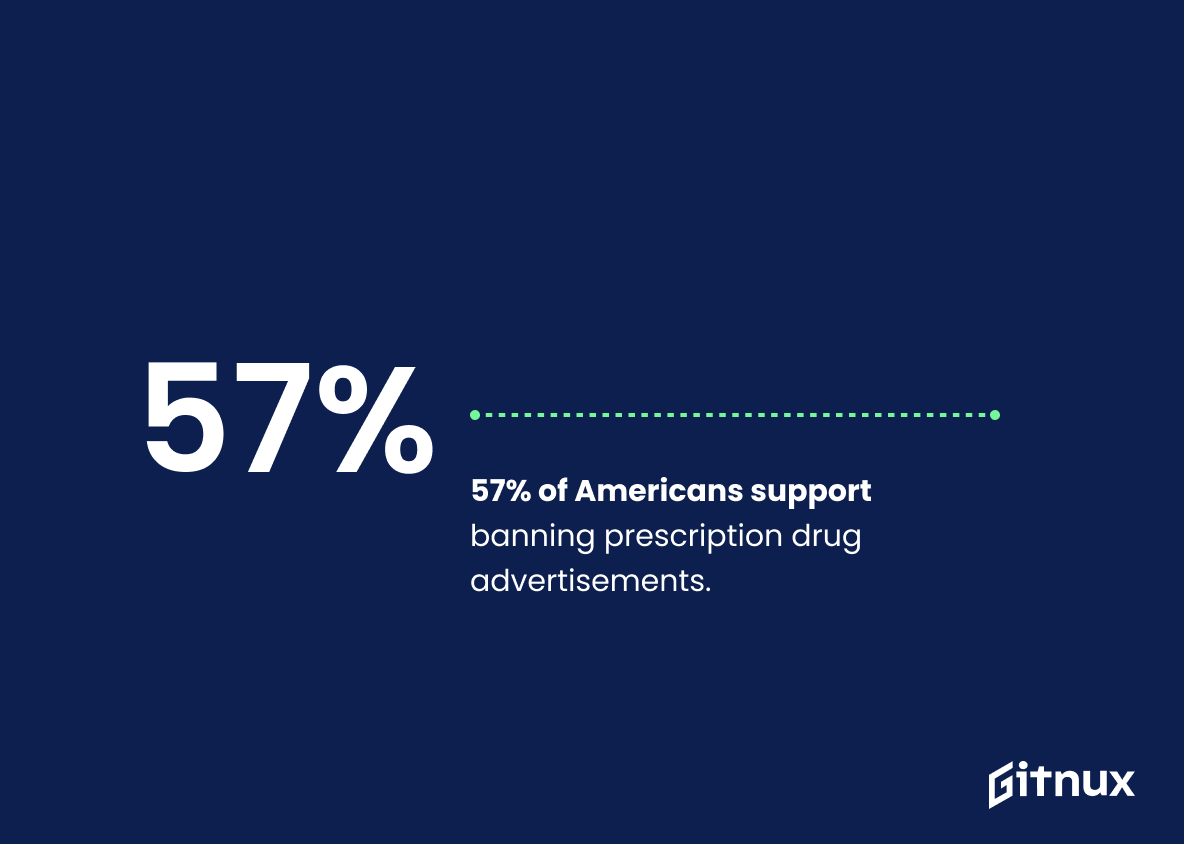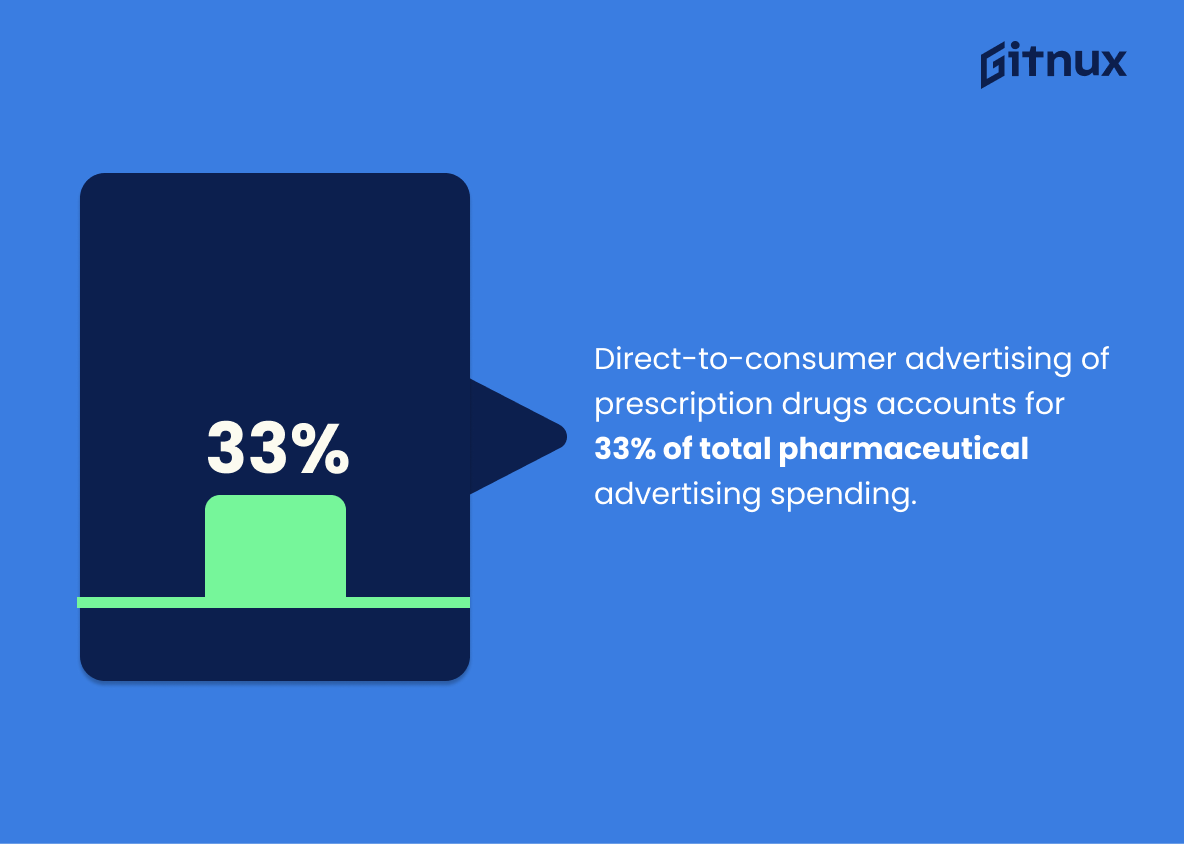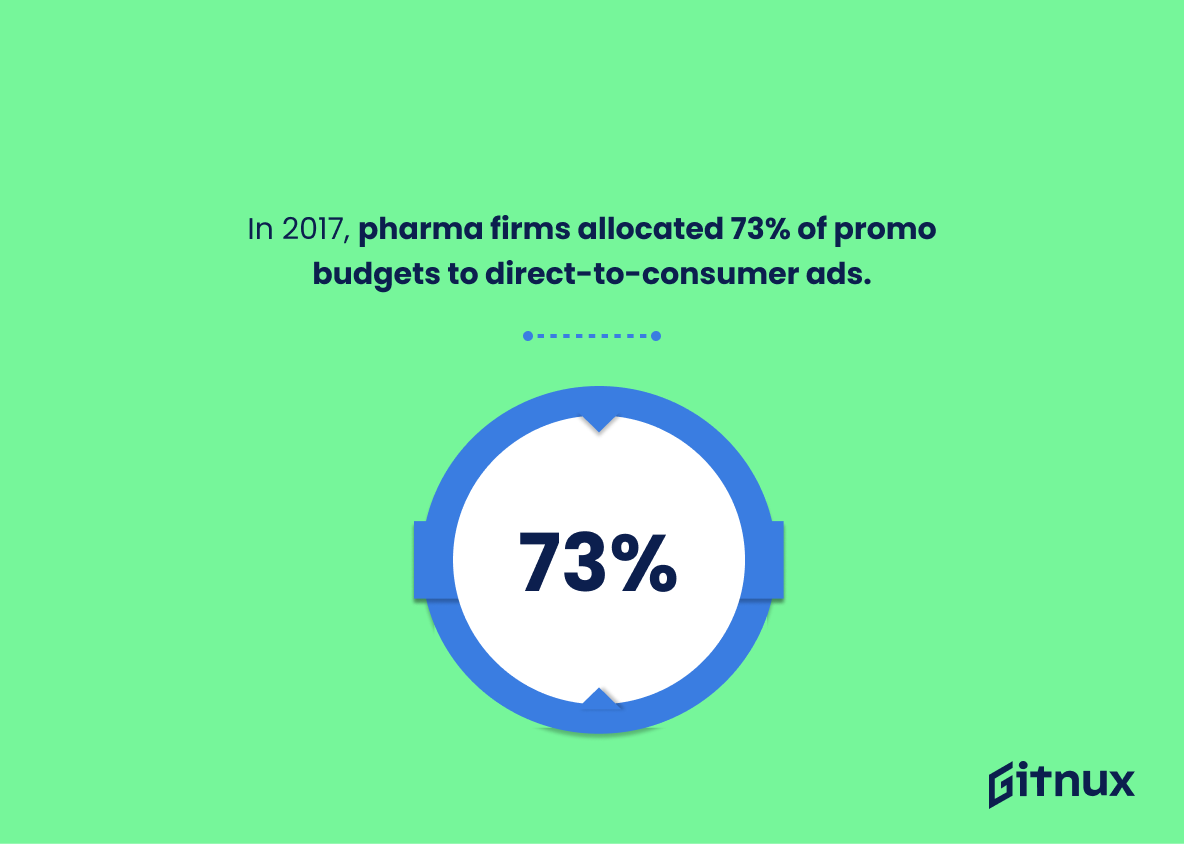Prescription drug advertising has been a hot topic in recent years, with many people debating whether it is beneficial or detrimental to public health. In this blog post, we will take a look at some of the latest statistics on prescription drug advertising and discuss what they mean for the industry.
We will also explore the potential implications of these statistics for the public and the pharmaceutical industry. Finally, we will discuss what steps can be taken to ensure that prescription drug advertising is done in a responsible and ethical manner.
Prescription Drug Advertising: The Most Important Statistics
Pharmaceutical companies have increased their advertising budget by 9 million dollars, resulting in a 300 million dollar revenue increase, representing a 2.2% growth from the previous year.
27% of Americans booked an appointment for a condition they had not previously discussed with their doctor due to prescription drug advertising.
Prescription Drug Advertising Statistics Overview
The research found that an increase in 10% in prescription drugs advertising can increase general prescriptions purchased by 5% and adherence rate by 1-2%.
This shows that advertising can be an effective tool for increasing the sale and use of prescription drugs.
An American spends 16 hours a year exposed to prescription drug advertisements, which is more time than they should spend at their doctor.
Thus, prescription drug advertisements in the media, could lead to an over-reliance on medications and an over-simplification of the medical process. This can be especially dangerous for those who are not well-informed about their medical options and may be more likely to take medications without consulting a doctor.
In 2021, the United States spent 7 billion dollars in prescription drugs advertising, with 6 billion dollars invested in TV and 1 billion dollars invested in print and digital media platforms.
This shows the amount of money that is being invested in prescription drugs advertising, and how much of that money is being allocated to different mediums.
Dupixent pharmaceuticals spent the most on TV advertising in December 2021 with 25.8 million dollars, followed by Bristol Myers Squibb with 19 million dollars.
This shows the effectiveness of their campaigns, as Dupixent was able to outspend Bristol Myers Squibb and rank first in TV advertising.
Pharmaceutical companies have increased their advertising budget by 9 million dollars, resulting in a 300 million dollar revenue increase, representing a 2.2% growth from the previous year.
Pharmaceutical companies are investing heavily in advertising, and are likely to continue to do so in the future, resulting in increased revenues and a larger budget than other advertising companies.
27% of Americans booked an appointment for a condition they had not previously discussed with their doctor due to prescription drug advertising.
Prescription drug advertising is thus effective in engaging patients in their healthcare and helping them to recognize and address conditions they may not have been aware of.
AstraZeneca is one of the leading pharmaceuticals companies to spend the highest amount of money for their prescription drugs advertising in 2019, with a total of 473 million dollars.
It shows that AstraZeneca is willing to invest a large amount of money in advertising their drugs, which could potentially lead to increased sales and higher profits.
Merck spent 161 million dollars to advertise Vioxx in 2000, making them the top spender in the prescription drugs advertising industry.
Pharmaceutical industry spending on advertising for prescription drugs increased in 2014, resulting in more unnecessary prescriptions being requested by customers, what highlights the potential influence of prescription drug advertising on the decisions of doctors and customers.
It suggests that the increased spending on advertising may have resulted in more customers requesting unnecessary prescriptions, and doctors feeling pressured to sign them in order to keep their customers.
This could lead to an increase in the misuse of prescription drugs, which could have serious health implications.
In 2004, Americans were exposed to 100 minutes of prescription drug advertising for every minute spent with their doctor, with 60% of these ads occurring during soap operas targeted at older people.
Supplementary Statistics
The United States and New Zealand are the only two countries that allow direct-to-consumer advertising for prescription drugs.
This is a reminder that the majority of countries do not allow this type of advertising, and that the United States and New Zealand are outliers in this regard. This statistic serves as a reminder of the importance of understanding the regulations and restrictions that exist in different countries when it comes to prescription drug advertising.
The annual number of prescription drug advertisements on television has increased by 62% since 2012.
It highlights the fact that more and more companies are investing in marketing their products to the public, and that the public is increasingly exposed to these messages. This is an important point to consider when discussing the impact of prescription drug advertising on public health.
57% of Americans support banning prescription drug advertisements.
This shows that a majority of Americans are in favor of banning these types of advertisements, which could be used to inform policy decisions and public opinion.
Direct-to-consumer advertising of prescription drugs accounts for 33% of total pharmaceutical advertising spending.
It demonstrates that a significant portion of pharmaceutical advertising spending is devoted to direct-to-consumer campaigns, suggesting that the industry is heavily invested in reaching out to potential customers. This statistic is a powerful reminder of the influence of prescription drug advertising and its potential to shape public opinion and behavior.
In 2017, pharmaceutical companies spent an estimated 73% of their total promotional activities on direct-to-consumer advertising.
Pharmaceutical companies are heavily investing in direct-to-consumer advertising, which can have a significant impact on how consumers view and purchase prescription drugs. This statistic is important to consider when discussing the effectiveness of prescription drug advertising and the potential implications it has on public health.
The average American encounters nine drug advertisements per day.
It highlights the sheer amount of exposure we have to these ads, and the potential influence they can have on our decisions. It is a powerful illustration of the need to be aware of the potential risks associated with prescription drugs, and to be mindful of the information we are exposed to.
One in five Americans have talked to their doctors about a specific prescription drug as a result of seeing an advertisement for it.
A significant portion of Americans are being influenced by these advertisements and taking action as a result. This highlights the importance of understanding the impact of prescription drug advertising and how it can shape the decisions of consumers.
Research has found that direct-to-consumer advertising may contribute to higher drug spending by increasing demand for more-expensive, branded drugs when equally effective and lower-cost alternatives are available.
This highlights the potential for direct-to-consumer advertising to drive up drug spending by encouraging consumers to opt for more expensive, branded drugs when cheaper alternatives are available. This could have a significant impact on the cost of healthcare, as well as the overall cost of prescription drugs.
In 2013, the top five pharmaceutical companies spent more than 100 million USD each on direct-to-consumer advertising for a single drug.
This speaks to the power of marketing and the lengths to which companies will go to promote their products. It also highlights the need for greater regulation and oversight of prescription drug advertising, as well as the need for consumers to be aware of the potential risks associated with taking certain medications.
The pharmaceutical industry spends around 22% of total advertising expenditure on digital channels.
It shows that the industry is investing heavily in digital channels, recognizing the potential of these platforms to reach a wide audience. This is an important insight for anyone looking to understand the current landscape of prescription drug advertising.
Prescription drug advertisements more than tripled in number from 1996 to 2005.
This highlights the increasing prevalence of these ads, and the potential impact they may have on consumer behavior. It is an important statistic to consider when discussing the implications of prescription drug advertising, and its potential effects on public health.
Among patients who asked their physician about a specific drug after seeing a direct-to-consumer advertisement, 44% were prescribed the requested drug.
When patients are exposed to a drug advertisement, they are more likely to ask their physician about the drug and, in turn, are more likely to be prescribed the requested drug. This highlights the importance of understanding the impact of prescription drug advertising on patient decisions.
In a 2018 survey, 63% of Americans said that pharmaceutical companies should be required to include their drug’s price in advertisements.
A majority of Americans believe that pharmaceutical companies should be held accountable for the prices of their drugs, and that they should be transparent about them in their advertisements. This is an important point to consider when discussing the effectiveness of prescription drug advertising, as it shows that the public is demanding more transparency from pharmaceutical companies.
About 15% of physicians believed that direct-to-consumer advertisement of prescription drugs can lead to more appropriate use of medications.
This suggests that, while there may be some risks associated with such advertising, there is also the potential for it to lead to more appropriate use of medications.
Direct-to-consumer advertising is associated with increased prescribing of advertised drugs as well as higher drug sales.
It is a reminder of the importance of understanding the impact of advertising on the public’s health decisions and the need to ensure that advertising is done responsibly.
In 2015, 11.7 billion USD were spent on television advertisements for prescription drugs in the United States.
This speaks to the prevalence of this type of advertising and the influence it has on the public’s perception of prescription drugs. It is an important piece of information to consider when discussing the impact of prescription drug advertising on the public.
Internet advertising for prescription drugs has grown by more than 100% since 2014.
It indicates that the industry is investing heavily in digital marketing, which is likely to have a significant impact on the public’s perception of prescription drugs. Furthermore, this statistic is a reminder of the importance of monitoring and regulating prescription drug advertising, as it can have a major influence on public health.
Conclusion
In conclusion, prescription drug advertising has become a major part of the healthcare industry. The statistics show that the amount of money spent on prescription drug advertising has grown significantly in recent years, and that the majority of this money is spent on television and print advertising. Additionally, the data suggests that the majority of prescription drug ads are targeted towards older adults, and that the majority of these ads are for brand-name drugs.
While prescription drug advertising can be beneficial in some ways, it is important to remember that it can also be misleading and can lead to overuse or misuse of medications. It is important to be an informed consumer and to discuss any concerns with a healthcare provider.
References
1 – https://knowledge.wharton.upenn.edu/article/prescription-drug-ads/#:~:text=For%20people%20who%20are%20already,leading%20to%20better%20drug%20adherence.
2 – https://www.ncbi.nlm.nih.gov/pmc/articles/PMC5910355/
3 – https://www.statista.com/statistics/532781/prescription-drug-advertising-usa/#statisticContainer
4 – https://www.statista.com/statistics/564213/drug-tv-ad-spend/
5 – https://www.statista.com/statistics/639356/tv-advertise-drugs-usa/
6 – https://www.statista.com/statistics/318165/astrazeneca-ad-spend-usa/
7 – https://www.ncbi.nlm.nih.gov/pmc/articles/PMC3967783/
8 – https://www.statnews.com/pharmalot/2015/12/08/ama-ban-drug-ads/
9 – https://pubmed.ncbi.nlm.nih.gov
10 – https://ihpi.umich.edu
11 – https://www.statista.com
12 – https://www.ncbi.nlm.nih.gov
